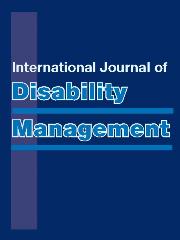Article contents
Strategies to Facilitate Successful Community Reintegration Following Acquired Brain Injury (ABI)
Published online by Cambridge University Press: 06 March 2012
Abstract
Acquired brain injury (ABI) is considered to be the primary cause of disability in our society. People with ABI face an array of challenges, which include emotional lability, disinhibition, irritability, distractibility, executive dysfunction, memory difficulties, inattention and noticeable changes to personality. Effective rehabilitation and community reintegration is considered essential for those with ABI but impeding the process is society's lack of knowledge and understanding. This is due in some part to the invisible nature of the disability. The focus of this article is to introduce the key areas that influence reintegration, being the rehabilitation process, service access and interventions. It is clear the reintegration process is greatly restricted by the lack of services and programs available to improve the long-term outcomes for people with ABI. To help facilitate successful community reintegration the article developed and lists a significant number of management strategies to assist those who are involved in the lives of people with ABI.
Keywords
- Type
- Articles
- Information
- Copyright
- Copyright © Cambridge University Press 2011
- 6
- Cited by


